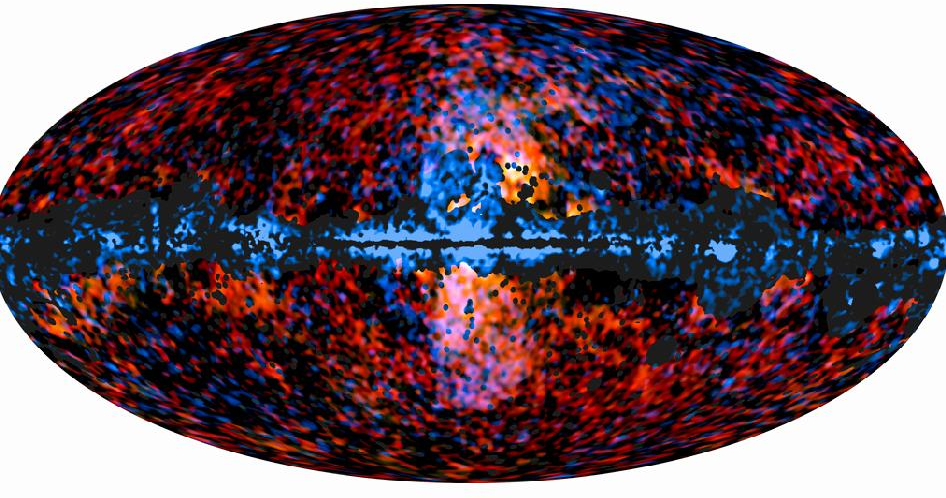
 Credit: Microwave: ESA/Planck Collaboration; Gamma-rays: NASA/DOE/Fermi LAT/D. Finkbeiner et al.
Credit: Microwave: ESA/Planck Collaboration; Gamma-rays: NASA/DOE/Fermi LAT/D. Finkbeiner et al.
Planck meets Fermi
The Universe runs hot and cold. Sometimes hot things become cold, sometimes cold things heat up. Comparing cold and hot images of the entire sky shows where these changes occur, and gives scientists a much more complete view of the natural processes occurring throughout the Universe. The image above is a multi-color view of the Universe obtained by combining data from two all-sky surveyors, ESA's Planck mission, and NASA's Fermi mission. Both missions keep a watchful eye on the sky: Planck observes the entire sky in the low-energy microwave band, while Fermi observes in the high energy Gamma-ray regime. Planck is designed to determine emission from some of the coldest spots in the Universe, primarily the relic cold radiation left behind by the Big Bang, but also nearby sources in our own Milky Way. Fermi hunts for emission from exploding stars, black holes and other powerful objects and events. The image above is a combined all-sky image of the Planck data (in blue) and the Fermi data (in red-orange). This image emphasizes a "microwave haze" seen by Planck which permeates the Milky Way, and which apparently is associated with the Gamma-ray bubbles seen by Fermi above and below the central Galactic plane. This Galactic haze seen by Planck has some unusual properties, leading scientists to suggest that enhanced supernova rates, galactic winds or even annihilation of dark-matter particles might be required to explain it.
Published: February 20, 2012
<
HEA Dictionary ● Archive
● Search HEAPOW
● Other Languages
● HEAPOW on Facebook
● Download all Images
● Education ● HEAD
>

Each week the HEASARC
brings you new, exciting and beautiful images from X-ray and Gamma ray
astronomy. Check back each week and be sure to check out the HEAPOW archive!
Page Author: Dr. Michael F. Corcoran
Last modified Monday, 26-Feb-2024 17:36:20 EST


